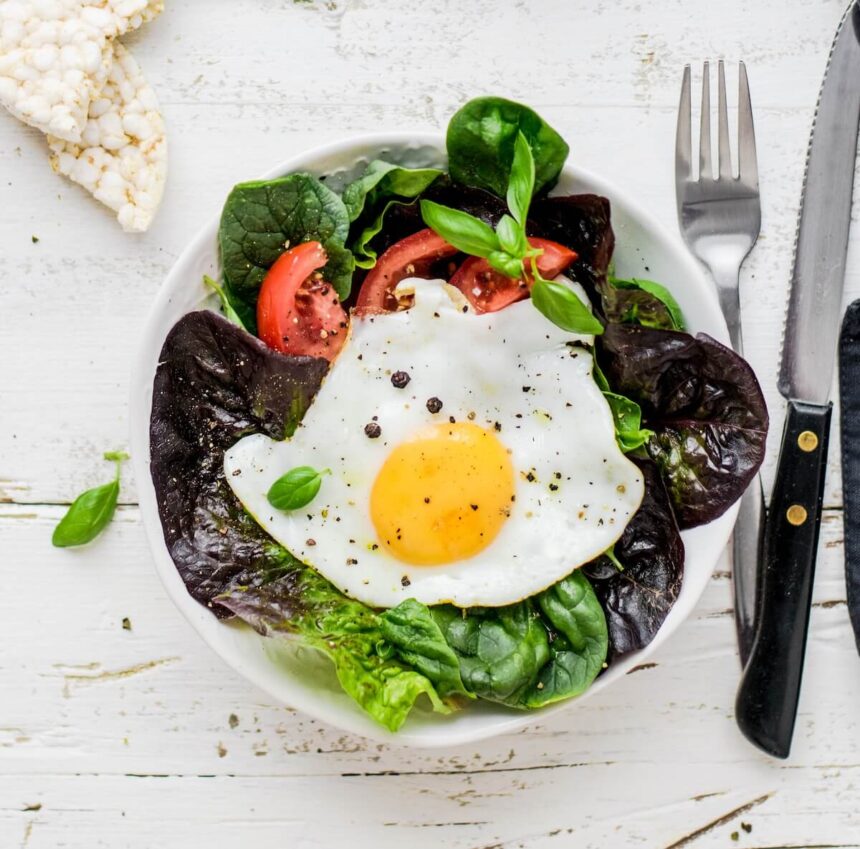Many health experts now agree that inflammation is at the root of many, if not all, diseases. We can reduce inflammation and stay healthy by making lifestyle changes. Diet stands out as one of the most important lifestyle changes we can make – especially since many foods are one reason for inflammation in the body.
So, if you’re looking to make some lasting changes to improve your health, you’ll want to consider the Zone diet.
What Is the Zone Diet?
The Zone diet was first created by Dr. Barry Sears, a biochemist and research scientist from the Boston University School of Medicine and the Massachusetts Institute of Technology.
The untimely deaths of some of his family members, including deaths from heart attacks, prompted Sears to create a diet that might help to prevent disease and delay early deaths.
The premise for the Zone diet is that inflammation is the chief reason why individuals gain weight, get sick, and age more quickly.
Therefore, his Zone diet set out to create a lifestyle that reduced systemic inflammation and prevented the risk for chronic diseases, including cardiovascular disease, cancer, diabetes, obesity, and arthritis.
What’s “The Zone”?
According to Dr. Sears, when your body is in “the zone”, it’s able to control inflammation and prevent it from getting out of control. There are three clinical markers that indicate whether you’re in the zone or not. The clinical markers are outlined below, as explained by the Zone Diet.
• TG/HDL ratio: This ratio measures the level of “bad” fats, or triglycerides, along with good cholesterol, or HDL cholesterol. The lower the value, the better your cholesterol levels are. An optimal value is 1 or less.
• AA/EPA ratio: This ratio measures omega-6 fatty acids versus omega-3 fatty acids in the body. This, in turn, indicates the level of diet-induced inflammation throughout the body. Ideally, the value should lie between 1.5 and 3.0.
• HbA1c: This indicates the level of Advanced Glycosylated Endproducts (AGE), which are tied to our blood glucose levels. A healthy value should be 5 percent, and the lower the value, the lower your blood sugar levels are.
The Zone diet claims that if you keep these three clinical markers in the correct ranges, your body will stay in the zone and control inflammation, thereby boosting weight loss and immunity while slowing aging, too.
How Does the Zone Diet Work?
Although the Zone diet makes some pretty hefty claims, it’s actually quite simple and straightforward. You do not need to cut out entire macronutrients.
Instead, as long as you follow a specific ratio, you can enjoy carbs (40 percent), protein (30 percent), and fat (30 percent) at every meal.
Therefore, if you divide your plate into three equal parts, two-thirds of it should contain carbohydrates, while one-third should have lean protein. A small portion of fat helps bring it all together.
There are many different types of carbohydrates, but those allowed in the Zone Diet are low glycemic foods. These help to keep blood sugar levels stable by releasing sugar slowly into the bloodstream. Low glycemic foods also help to keep you fuller longer.
When it comes to protein and fats, the Zone diet encourages lean protein sources and monounsaturated fats.
To understand how much food you can eat, you can use your hands and eyes to measure out the ratio of carbohydrates, fats, and proteins.
For example, by simply filling your plate with two-thirds carbohydrates is an easy way to ensure that most of your meal is carbohydrate-based. When measuring for one-third lean protein, aim for the size and thickness of your palm. This will be about the right size. The fat should create a small accent on the entire plate.
What Can You Eat on the Zone Diet?
As you’ll see, there are lots of yummy whole foods to choose from. Let’s begin with the low glycemic carbohydrates allowed in the Zone diet meal plan:
- Apples
- Barley
- Berries
- Chickpeas
- Cucumbers
- Mushrooms
- Oatmeal
- Oranges
- Peppers
- Plums
- Spinach
- Squash
- Tomatoes
As you can see, fruits are allowed in the Zone diet. However, be sure to avoid fruits high in sugar, such as bananas, dried fruit, mangos, grapes, raisins, and starchy vegetables like potatoes, corn, carrots, and peas.
Similarly, processed and refined carbohydrates are discouraged, and that covers everything from bread, pasta, breakfast cereals, and baked goods, as well as sweets and beverages with added sugar.
Lean Protein
When it comes to lean protein sources, there’s a lot to choose from, too.
- Beef, lean
- Cheese, low-fat
- Chicken breast, skinless
- Egg whites
- Fish
- Game meats, lean
- Lamb, lean
- Milk, low-fat
- Pork, lean
- Shellfish
- Veal, lean
- Yogurt, low-fat
Monounsaturated Fats
Finally, fats are allowed, but the Zone diet encourages one specific type: monounsaturated fats, especially from the following sources:
- Almonds
- Avocados
- Cashews
- Macadamia nuts
- Peanuts
- Peanut butter
- Pistachios
- Olive oil
- Sesame oil
- Tahini
The Zone Diet Meal Schedule
You do need to count calories on the Zone diet. And for women, this comes to about 1,200 calories per day. This is a relatively low amount of calories and can lead to feeling hungry.
This is a no-go because it can push your body into starvation mode and make it more difficult for your body to burn fat. What’s more, calorie restrictions like this can be difficult to stick to. Luckily, the Zone diet leaves you with lots of opportunities to eat – up to five times a day.
In fact, a rule of thumb on the Zone diet is to never go for more than five hours without eating.
Therefore, you can enjoy three meals per day and, if necessary, two snacks. Being able to snack on healthy foods can help reduce hunger and prevent mindless snacking.
Does the Zone Diet Work for Weight Loss?
One of the chief motives for following any diet is to lose weight and stay in shape. However, studies reveal that the Zone diet may not live up to its weight loss claims.
Research shows that while you can lose weight on the Zone diet, it’s less than what individuals lose on similarly low-carb diets, like the Atkins diet.
That being said, the Zone diet may still be a step in the right direction for improving your diet. With it, you get to incorporate a wide variety of whole foods while cutting out unhealthy fats and inflammatory foods, such as sugar, processed carbohydrates, and more.
No matter what your current fitness goals are, making dietary changes like these can be beneficial on many levels.








